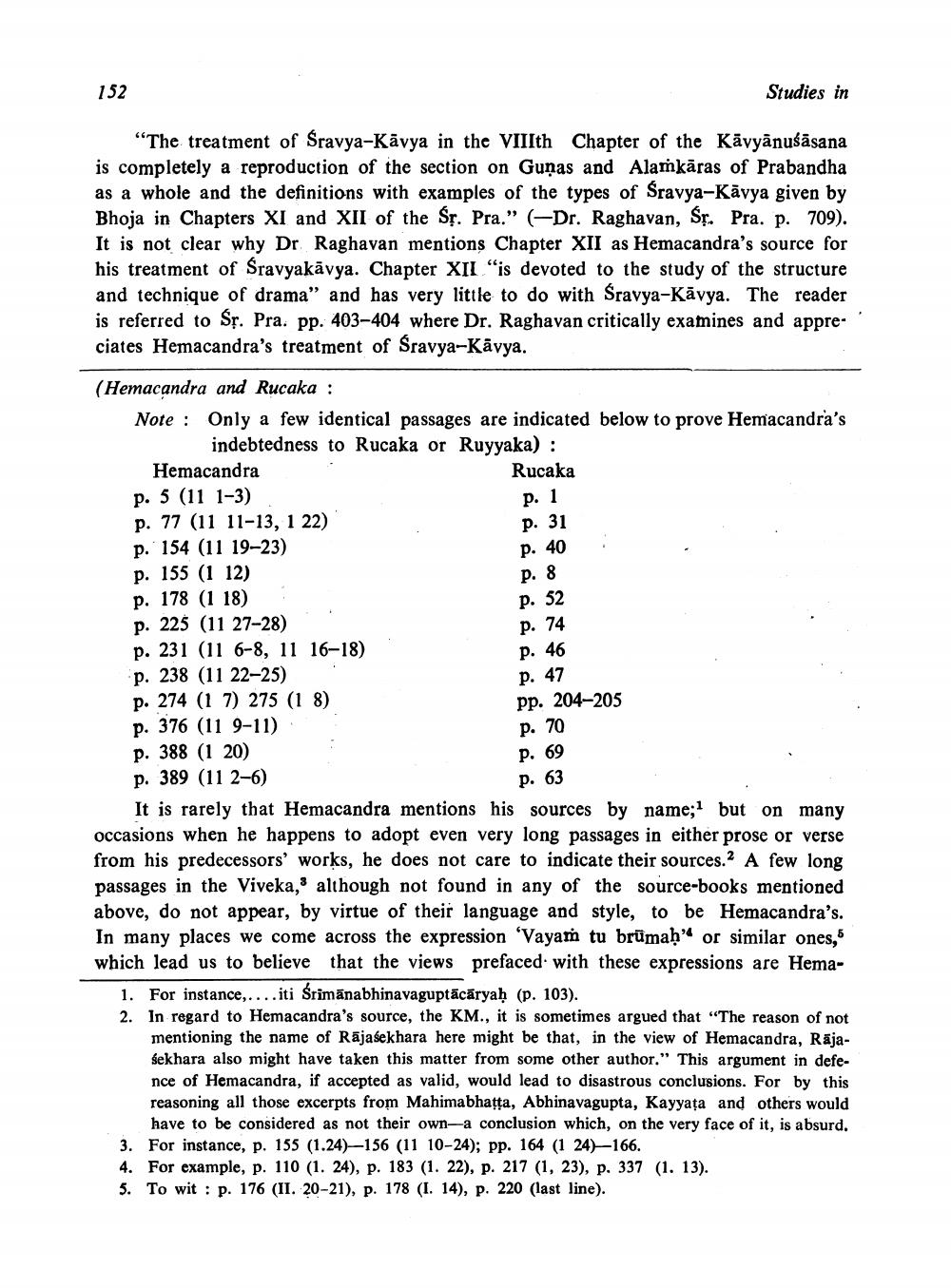________________
152
Studies in
"The treatment of Sravya-Kāvya in the VIIIth Chapter of the Kāvyānuśāsana is completely a reproduction of the section on Gunas and Alamkāras of Prabandha as a whole and the definitions with examples of the types of Sravya-Kavya given by Bhoja in Chapters XI and XII of the Sr. Pra." (Dr. Raghavan, Sr. Pra. p. 709). It is not clear why Dr Raghavan mentions Chapter XII as Hemacandra's source for his treatment of Sravyakāvya. Chapter XIL “is devoted to the study of the structure and technique of drama" and has very little to do with Sravya-Kāvya. The reader is referred to Sr. Pra. pp. 403-404 where Dr. Raghavan critically examines and appreciates Hemacandra's treatment of Sravya-Kävya.
p. 1
p. 40 p. 8
p. 74
p. 70
(Hemacandra and Rucaka : Note : Only a few identical passages are indicated below to prove Hemiacandra's
indebtedness to Rucaka or Ruyyaka) : Hemacandra
Rucaka p. 5 (11 1-3) p. 77 (11 11-13, 1 22)
p. 31 p. 154 (11 19-23) p. 155 (1 12) p. 178 (1 18)
p. 52 p. 225 (11 27-28) . p. 231 (11 6-8, 11 16-18)
p. 46 p. 238 (11 22–25)
p. 47 p. 274 (1 7) 275 (1 8)
pp. 204–205 p. 376 (11 9-11) p. 388 (1 20)
p. 69 p. 389 (11 2-6)
It is rarely that Hemacandra mentions his sources by name;1 but on many occasions when he happens to adopt even very long passages in either prose or verse from his predecessors' works, he does not care to indicate their sources. A few long passages in the Viveka, although not found in any of the source-books mentioned above, do not appear, by virtue of their language and style, to be Hemacandra's. In many places we come across the expression 'Vayam tu brūmah or similar ones, which lead us to believe that the views prefaced with these expressions are Hema
1. For instance,....iti Srimānabhinavaguptācāryaḥ (p. 103). 2. In regard to Hemacandra's source, the KM., it is sometimes argued that "The reason of not
mentioning the name of Rajasekhara here might be that, in the view of Hemacandra, Rajasekhara also might have taken this matter from some other author." This argument in defence of Hemacandra, if accepted as valid, would lead to disastrous conclusions. For by this reasoning all those excerpts from Mahimabhatta, Abhinavagupta, Kayyața and others would have to be considered as not their own-a conclusion which, on the very face of it, is absurd.
For instance, p. 155 (1.24)—156 (11 10-24); pp. 164 (1 24) 166. 4. For example, p. 110 (1. 24), p. 183 (1. 22), p. 217 (1, 23), p. 337 (1. 13). 5. To wit : p. 176 (II. 20-21), p. 178 (I. 14), p. 220 (last line).
p. 63




